How To Insert A Tampon With Minimal Discomfort?
You already know that tampons are safer and more effective than sanitary pads. Don’t let the worry of pain and discomfort stop you from using them.
On Mar 26, 2023 – 12 minutes read

Tampons at first glance are challenging to decipher, almost like a hopeless riddle. Many women, let alone men, look at it in bewilderment. When you reach the aisle of tampons, a myriad of questions will go through your head. Questions from ‘how to insert a tampon?’ and ‘how do tampons work?’ to ‘what is the possibility of a tampon disappearing inside your body?’
Yes, you need to insert the tampon into your body (just like menstrual cups, menstrual discs and menstrual sponges) and it will be completely invisible once it is inside. As bizarre as it sounds for a person who has never used a tampon, the possibility of a tampon disappearing inside your body is close to none. The only other opening is through your cervix at the top of your vagina. As it is too small for a tampon to pass through, you won’t have to worry about it getting lost inside you(1).
How To Insert A Tampon Easily For Beginners?
As luck would have had it, once you get the hang of using a tampon, you will find it difficult to go back to using pads that are not exactly covert. The advantage you wouldn’t want to miss with using tampons is that it absorbs your menstrual flow before it exists from your body. Thus, you can save yourself from the embarrassment of placing the maxi pad improperly and the possible chance of a leak when you are out. When you insert a tampon in the right way, you can quite dramatically reduce the risk of such embarrassing leaks and discomforts as well. Although the material is compressed, it will expand when it gets wet.
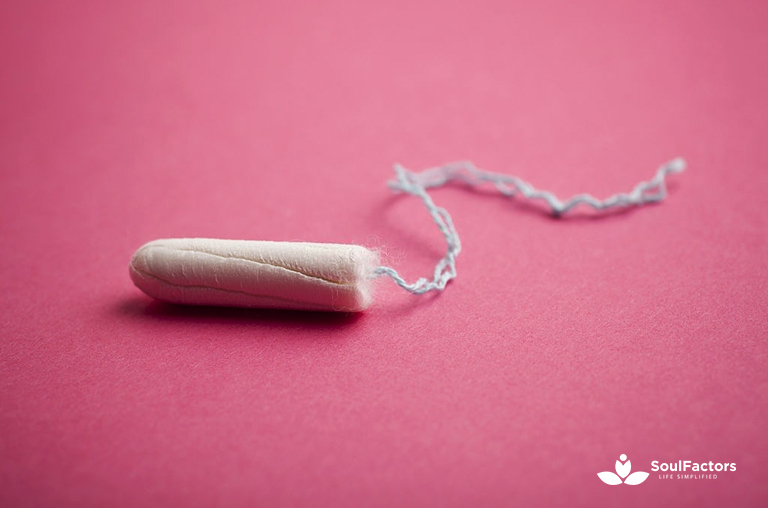
It is no surprise that first-time users will find it slightly scary and uncomfortable to use a tampon with the fear of breaking the hymen remains intact. Your vagina is stretchy enough to fit a baby, there is no reason to fret over a tiny tampon! Although pads are more popular than tampons, it is also important to know that more than 70 percent of women use tampons as they are more discreet than pads.
They usually switch with pads by using tampons during the day and pads at night. You can even use tampons while swimming during the period. You also have to remember that we were all beginners once and you might not get it right in the first try itself and relaxing your muscles will help you slip a tampon inside easily as well. So, follow these basic instructions to insert a tampon with minimal discomfort.
How Does A Tampon Applicator Work?
Most tampons come with an applicator which makes it easier for a beginner to insert a tampon easily without any discomfort. Before we get into how to insert a tampon using an applicator, let’s see what are the different parts of an applicator. A tampon has two parts — the plastic or cardboard applicator and the tampon itself. For a beginner, it is always better to choose a plastic applicator as cardboard is rigid and doesn’t slide easily inside.
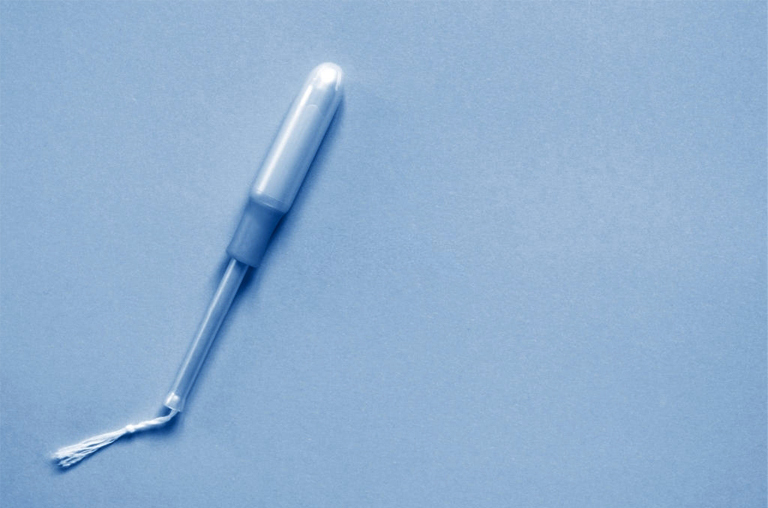
On the other hand, the plastic applicator is round in shape with slick material that has a smooth, tapered barrel (the bigger tube). It contains the tampon, attached to a smaller tube below called a plunger from where the strings come out. The grip is where you will be holding while inserting the tampon in. There is a contoured tip at the beginning of the barrel through which the tampon will be pushed inside. You don’t need to lubricate your vagina for tampon insertion as your menstrual fluid is more than enough.
How To Insert A Tampon With An Applicator?
Now you are familiar with the parts of the tampon and its applicator, let’s see how to use a tampon applicator. Even though you can read the directions that come inside your tampon box, here’s a quick refresher(3).
Step 1: Wash your hands
Making sure that you don’t spread any germs or bacteria inside your vagina is important. So, wash your hands thoroughly with soap and water and give them a good scrub before using the tampon. Even if you think you won’t be in contact with the labia, don’t skip the washing.
Step 2: Unwrap the package
After unwrapping, make sure that the applicator tip is rounded and strings are hanging out the plunger (with the absorbent part of the tampon safe inside the barrel). Gently pull on the strings to make sure that they are firmly attached.
Tip on how to insert a tampon without discomfort: Get comfortable
Getting into a comfortable position will help you relax which in turn can help you insert the tampon easily. You can sit on the toilet with your knees kept apart, or be in a squat position, or stand and prop one of your legs up on the toilet or the tub. Try out different positions and choose one comfortable position.
Know where you are putting the applicator
You have to know where you are supposed to insert the tampon, which is the vaginal opening. If you are not already aware of the urethra, is it where urine comes out. As it is a small hole, you don’t have to worry about inserting the tampon accidentally to the urethra. You could use either your finger or the tip of the tampon to feel around the vagina to spot the opening. If it’s your first time, you could always hold a mirror for a visual guide.
Relax your muscles
This is so important that if not relaxed, you won’t be able to insert the tampon without discomfort. When you do not relax your muscles around the vagina, the applicator won’t go inside smoothly as the opening will be closed. So, get into a comfortable position and relax.
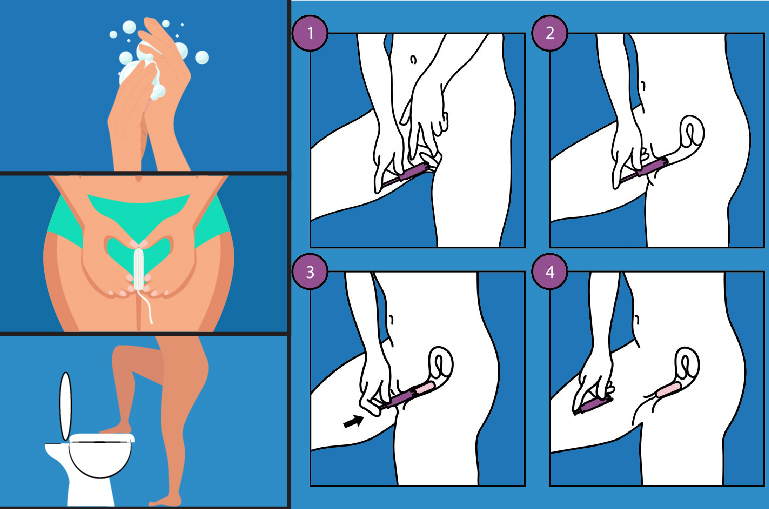
Step 3: Insert the tampon applicator
Grab the applicator and hold the grip part with your thumb and middle finger. Keep your index finger on the plunger (without pushing). Using the tip of the applicator, feel around for the vaginal opening. Once you place it, gently insert it at a 45° angle — angling towards your back. Otherwise, the tampon won’t go in smoothly and may be painful if you insert it straight up and in. The right tampon angle is 45° and when inserted at the right angle, you won’t feel any pain or discomfort. You should only push the smooth, tapered barrel, gently, all the way inside until your hold on the grip touches your vulva. The grip and the plunger (smaller or outer tube) must be outside. Also, the string must be facing away from your body.
How to insert a tampon? Step 4: Plunge the tampon
Once the barrel is comfortably inside you, hold the grip and push your index finger on the plunger (the smaller tube) all the way into the barrel. This will release the tampon into the vagina through the applicator’s countered opening. You have to push until the plunger meets the grip and your thumb and middle finger. Like how you use an injector.
Step 5: Remove the applicator
When you have pushed the plunger into the barrel, it must release the tampon. So still holding the grip, gently pull out the tampon applicator using your thumb and middle finger. Make sure you leave the strings to hang out. Do not pull out the string as they are there for you to remove the tampon later. You can either leave them hanging or fit them between the folds (not inside the vaginal opening).
Make sure that you don’t feel any discomfort
After taking out the applicator, you need to make sure that you don’t feel any discomfort with the tampon being inside you, especially when you sit. If you do, that simply means you haven’t placed it correctly. If you can still feel the tampon, it is because the tampon is not far enough inside. You can pull it out and re-insert a new one, pushing it up higher until you won’t feel it inside.
Do not flush the plastic applicator
After removing the applicator, place it back inside the plastic lining or wrap in toilet paper before putting it in the trash. Do not flush it down the toilet! Wash your hands and you are done!
How to Insert a Tampon Without an Applicator?
This is not really that different except for instead of inserting an applicator, you will be using your finger to push the tampon into your vagina. Some tampons come without applicators. But we recommend that first-time users of a tampon use an applicator to insert it(2).
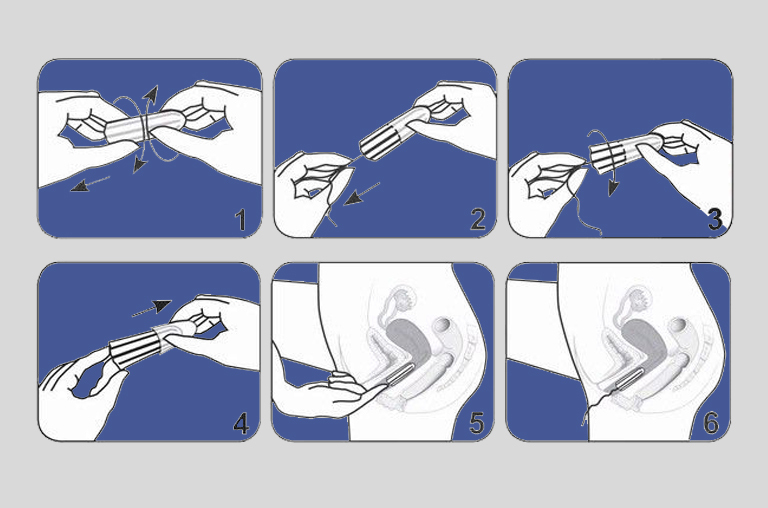
- The first step is always washing your hands. Not that your vagina is dirty, but your hands might be carrying bacteria or germs and you don’t want it going inside your vagina. Wash your hands thoroughly because you will be inserting your finger inside.
- Unwrap the tampon from its package.
- Get into a comfortable position. Either by sitting on the toilet seat by knees kept apart, or by squatting down, or by keeping one of your legs perched up on the toilet seat or bathtub.
- Grab the string and pull it from top to bottom, and left to right to widen the base of the tampon. Put your index finger in the small pocket you have made by pulling the string around. Then, hold the base of the tampon between the middle finger and the thumb and insert it into the vagina.
- Use your index finger like the plunger and push the tampon, gently, inside your vagina. To ensure that it stays secure inside, you might have to push it farther than you think. You shouldn’t be able to feel the tampon at all. If you do feel it, push it a bit farther in.
- Remove your finger while leaving the string hanging out of the vagina.
How To Remove A Tampon?
Removing a tampon is effortless. When the tampon is soaked through, get into a comfortable position, and relax your muscles. Then, gently pull down on the strings and the tampon should slide out easily without any pain. Toss it in the garbage because you should not flush down the used tampon. Always remember to wash your hands before inserting and after removing the tampon.
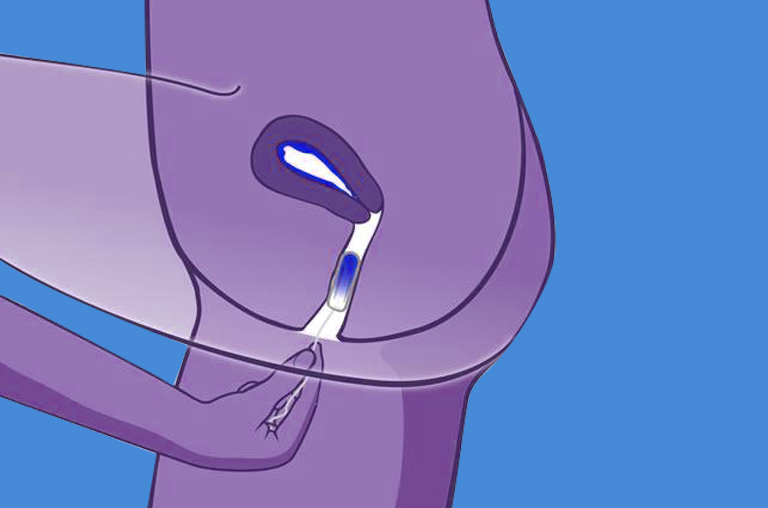
How To Choose A Tampon Size?
Now, You are familiar with the steps to follow to insert a tampon correctly without causing much discomfort. So, let’s see how you can choose the right size. Because there are different sizes, you might feel discomfort or pain with the use of the wrong size.
Tampon sizes designate the amount of menstrual flow they can absorb during the days of a period. Akin to sanitary pads, they are a blend of cotton and rayon that collect the blood or fluid flowing out of the vagina. You must not, under any circumstance, use tampons for vaginal discharge as it is only made for absorbing blood. They come in various sizes and shapes with different levels of absorbency. But thankfully, they are designed to hold from six to eight grams of blood.
As the amount of blood lost may vary depending on your flow, the tampon size you use will also change.
Common tampon sizes include:
- Junior or slim (for lighter periods used at the beginning or at the end days)
- Regular (generally used for normal days — 6 to 9 grams)
- Super (used for heavy days — 9 to 12 grams)
- Super-plus (these are used for heaviest days of bleeding — 12 to 15 grams)
- Ultra (15 to 18 grams)
Not many women use ultra tampons because when the tampon is too absorbent. It can dry out your vagina causing a tear and increasing the risk of TSS.
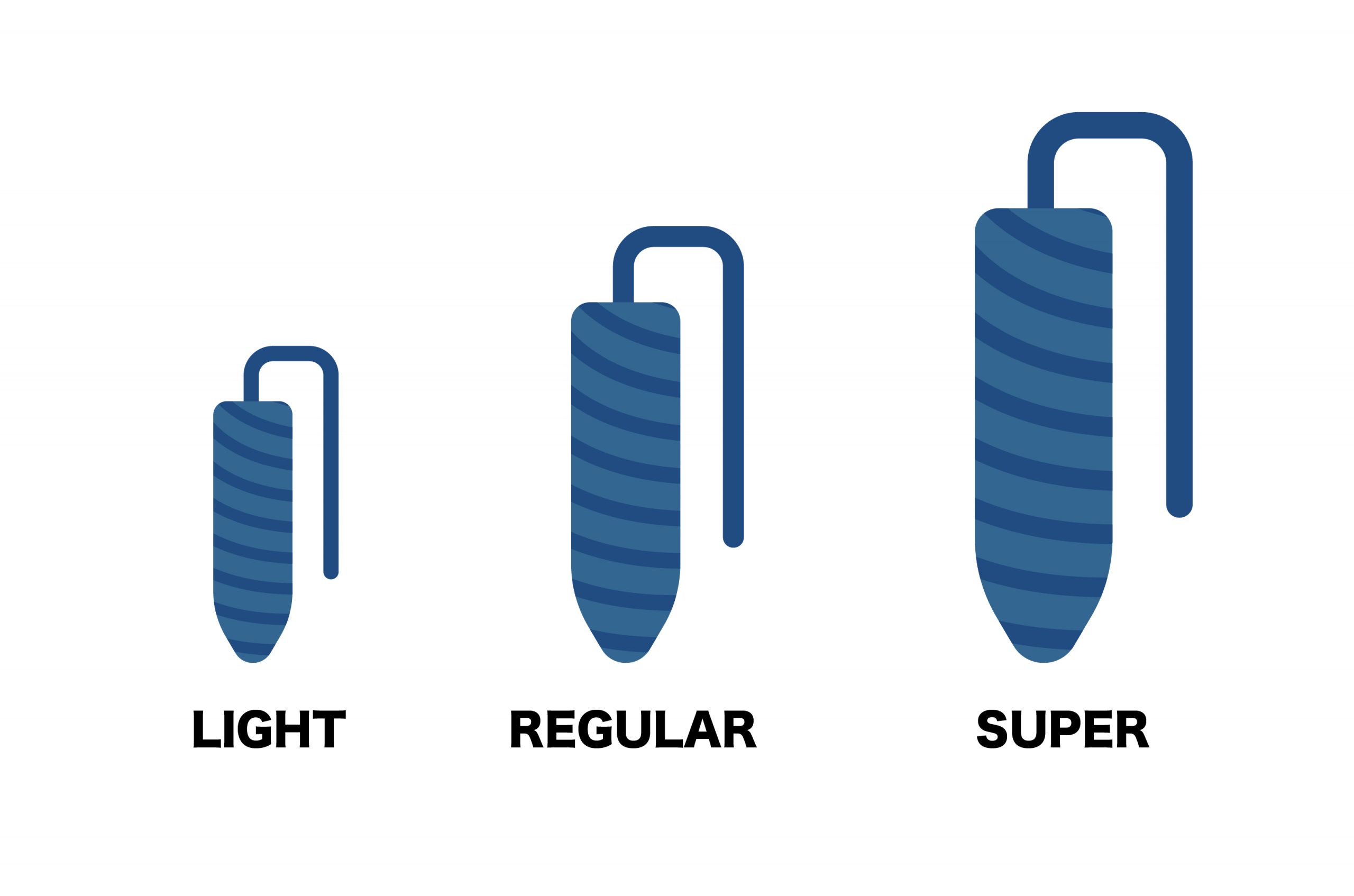
- For a beginner, choose those with a minimally sized insertion applicator. Plastic applicators will be more comfortable than cardboard inserters.
- If the current size you are using needs changing within a couple of hours, choose a larger-capacity tampon instead.
- If tampon insertion hurts, then you are most likely using too large a size of tampons.
- Active women can choose a sport tampon. These are designed to flex naturally during increased exercise. This will ensure to shift the tampon during movement to prevent leaks.
- You can use different sizes depending on the flow of your menstrual blood.
- If you are leaking, consider moving up to a higher-absorbent tampon.
Are Tampons Safe To Use?
Tampons are available in ‘organic’ and standard varieties even in ‘scented’ and ‘unscented’ options. But you can safely use any of them, before they reach the market, they go through FDA review to evaluate the safety and efficiency along with tampons’ strength, absorbency, and integrity. They also review to determine whether tampons will stimulate the growth of harmful bacteria or alter normal bacterial growth in the vagina.
The absorbent fibers used in tampons go through a bleaching process that prevents products from having dangerous levels of dioxin and is also free from elemental chlorine. So, yes, you can safely use tampons that are legally marketed with the approval of the FDA. If a tampon gets stuck inside you and you cannot get it out, any healthcare staff will be able to remove it for you.
What Is Toxic Shock Syndrome (TSS)?
One important risk a tampon user should know about is Toxic Shock Syndrome (TSS). It is a safety issue associated with using tampons. The majority of cases of TSS occur in women during menstruation and there is no evidence that tampons directly cause TSS. It is a rare yet life-threatening disease caused by a toxic substance produced by certain kinds of harmful bacteria.

The bacteria streptococcus or staphylococcus aureus is the cause of the illness. It enters into the body and releases harmful toxins that can cause damage (heart, kidney, and liver failure), shock, and even death. They normally live on the skin and in the mouth or nose without causing harm. However, if they get deeper into your body, they start to release toxins and can damage tissue and organs. It can happen when you keep a tampon inside for too long. Symptoms of TSS include faintness, headache, vomiting or diarrhea, high fever, and low blood pressure.
How To Insert A Tampon Avoiding TSS
The major causes of TSS are wearing tampons for longer than recommended and using more absorbent tampons than necessary. So, to be safe from TSS, read the labels before using tampons and choose the lowest absorbent tampon. Change them frequently — every four to six hours (multiple times a day), alternate with sanitary napkins, and use pads when your flow is light. If you once had TSS, don’t use tampons as TSS can recur. Menstrual cups and menstrual discs are other safe options with only rare cases of TSS reported (4).
The Bottom Line
Even if it feels strange at first, once you familiarize yourself with inserting a tampon properly, you will find it easier the next time. If it makes you waddle while walking, it is probably because the tampon is not far enough inside your vagina. Use your finger to push in farther to fix it.
The most common reason women cannot get a tampon inside is that they are inserting it at the wrong angle or they are not relaxing their muscles around the vaginal opening. If you’ve adjusted the right angle while relaxed and you still find it difficult to insert it and it hurts, you may consider consulting a doctor.

Subscribe to Newsletter
Elevate your routine, stay on trend, and embrace a personalized beauty journey with our curated insights.



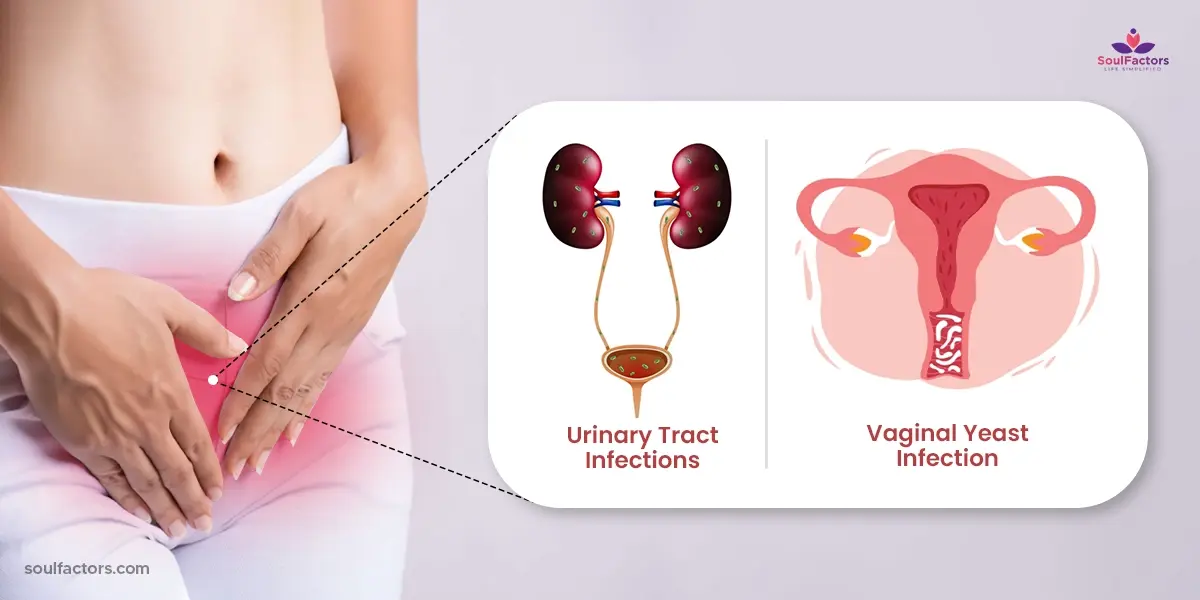

Write a Comment